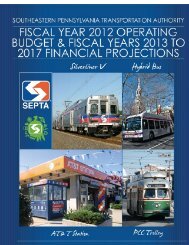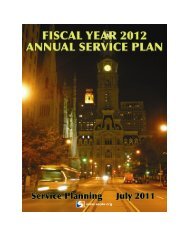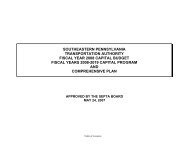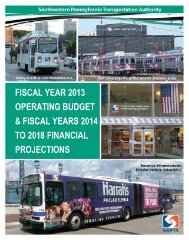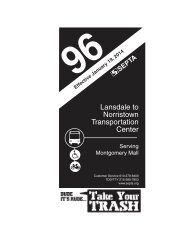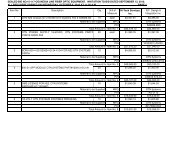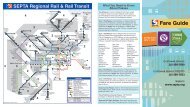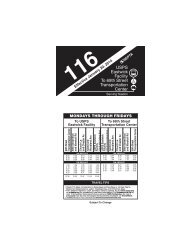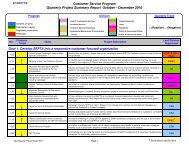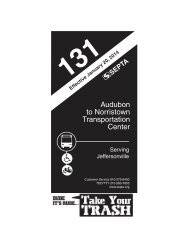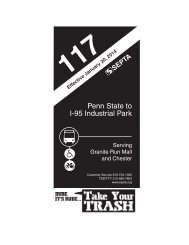FY 2012 Capital Budget and FY 2012-2023 Capital Program - Septa
FY 2012 Capital Budget and FY 2012-2023 Capital Program - Septa
FY 2012 Capital Budget and FY 2012-2023 Capital Program - Septa
You also want an ePaper? Increase the reach of your titles
YUMPU automatically turns print PDFs into web optimized ePapers that Google loves.
`<br />
FUNDING OUTLOOK AND SHORTFALL<br />
Fiscal Years 2016-<strong>2023</strong> – SEPTA’s Unfunded <strong>Capital</strong> Needs<br />
The Federal Transit Administration issued a report entitled, National State of Good Repair Assessment, as follow up to its 2009<br />
“Rail Modernization Study.” These reports affirm the financial constraints on the nation’s public transportation systems, <strong>and</strong> the “old<br />
rail cities” in particular. Taken together, both reports emphasize the magnitude of the state of good repair (SGR) backlog - $77.7 billion<br />
for all transit assets nationwide <strong>and</strong> $50 billion for rail assets in the nation’s seven “old rail” agencies (CTA–Chicago, MBTA–Boston,<br />
MTA–New York, NJ Transit, BART–San Francisco, SEPTA, <strong>and</strong> WMATA–Washington, DC).<br />
The Rail Modernization Study included the following findings:<br />
• The seven agencies studied (CTA–Chicago, MBTA–Boston, MTA–New York, NJ Transit, BART–San Francisco, SEPTA, <strong>and</strong><br />
WMATA–Washington, DC) account for 80% of rail riders, 50% of track miles <strong>and</strong> 75% of rail rolling stock.<br />
• 35% of agency assets are in “poor” or “marginal” condition (the end of their useful life). By comparison, less than 20% of<br />
national transit assets (excluding the seven study agencies) are rated marginal or poor.<br />
• Since the Intermodal Surface Transportation Efficiency Act (ISTEA), federal SGR funds have grown from $23.6 to $35.6 billion.<br />
However, increases in eligible entities <strong>and</strong> project-types have reduced the “old rail cities’” share – leaving them with only 23% of<br />
SGR-eligible federal funds since 1991.<br />
• The FTA estimates $50 billion (all funding sources) is needed to address the backlog <strong>and</strong> bring the seven agencies to a state of<br />
good repair. Distributed among: Heavy Rail / $37.1B, Commuter Rail / $9.1B, Bus / $2.8B, Light Rail / $0.6B, System-wide /<br />
$0.4B.<br />
SEPTA has continued to confront the challenges of maintaining its infrastructure in a state of good repair. New funding<br />
constraints have exacerbated the backlog of capital needs described in the FTA’s report, which have grown amid broader concerns of<br />
maintaining operating efficiency, achieving ridership growth <strong>and</strong> improving customer service. This report cites SEPTA’s share of this<br />
backlog being in excess of $4 billion.<br />
The programming amounts <strong>and</strong> projects listed in the outer years of SEPTA’s <strong>Capital</strong> <strong>Program</strong> represent what is required to<br />
address the current unfunded backlog of SEPTA’s capital needs.<br />
27



